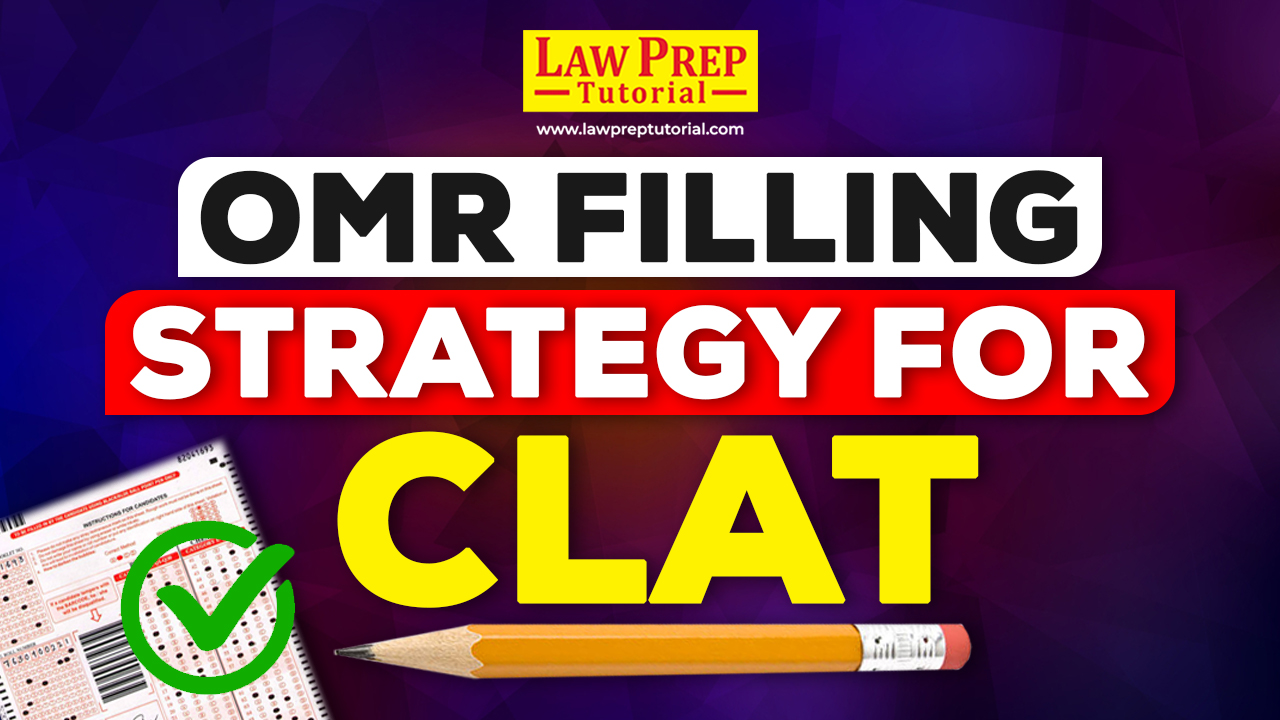Successfully clearing the Common Law Admission Test (CLAT) is a significant milestone for those aspiring to enter India’s prestigious law schools. While candidates focus on rigorous preparation, they often overlook a seemingly minor but profoundly impactful aspect of this competitive exam: filling out the Optical Mark Recognition (OMR) sheet accurately.
This deceptively simple piece of paper holds the key to translating your answers into scores, and any slip-ups here can cost you valuable marks.
In this comprehensive guide, we unveil the art of precise OMR sheet filling during the CLAT exam. Your choice of when to mark your answers—whether it’s after each question, after each section, or at the end of the paper—can significantly impact your test-taking experience.
With an emphasis on precision and attention to detail, we aim to boost your chances of success in this fiercely competitive examination. So, let’s embark on this journey to master CLAT’s OMR sheet filling process and unlock your path to a successful law school admission.
Upcoming CLAT Exams:
General Tips for Accurate OMR Sheet Filling in CLAT
High-stakes exams require a methodical approach to OMR sheet filling. In this section, we’ll explore key tips to ensure you get it right.
1. Read and Comprehend the Instructions:
Before you touch your pen, carefully read and understand the instructions provided on the OMR sheet. Each exam may have specific rules and guidelines.
2. Pen Selection Matters:
Choose a reliable black or blue ballpoint pen with good ink flow. Avoid gel pens, pencils, or pens with faded ink to ensure your markings are distinct and easily scanned.
3. Fill Bubbles Completely:
The cardinal rule is to fill the answer bubbles fully and neatly. Scanners may not recognize incomplete marks, potentially causing errors.
4. Stay Inside the Lines:
Keep your markings well within the designated circles or ovals. Stray marks outside these boundaries can result in misinterpretations.
5. Match with Question Numbers:
Ensure that your answers correspond correctly to the question numbers on the exam paper. Misalignment can lead to confusion and errors.
6. Mind Negative Marking:
If your exam employs negative marking, exercise caution when answering questions, you’re unsure about. Leaving these questions blank could save you from losing precious points.
7. Manage Time Wisely:
Effective time management for CLAT Exam is crucial. Allocate your time to complete both the exam and OMR sheet filling within the stipulated timeframe.
8. Stay Calm Under Pressure:
Maintaining your composure and focus is essential. Nervousness can lead to costly mistakes while filling the OMR sheet.
9. Submit On Time:
Make it a priority to submit your OMR sheet within the stipulated timeframe, following instructions provided by the exam invigilators.
10. Practice Makes Perfect:
Familiarize yourself with the OMR sheet format through practice. Working with sample OMR sheets before the actual exam can instil confidence and familiarity with the process.
Also Read: CLAT Logical Reasoning
Choosing Your OMR Sheet Filling Strategy
The next step is to decide when to fill your OMR sheet. We’ll explore three popular strategies for CLAT and beyond:
1. Filling After Each Question:
Some candidates prefer to fill the OMR sheet immediately after answering each question. This approach minimizes the risk of forgetting to fill the OMR later and can help you stay on track with the pace of the exam.
2. Filling After Each Section:
Alternatively, you can choose to fill the OMR sheet at the end of each section or subsection. This approach helps maintain your focus on answering questions without interruptions. It also offers a buffer for time management.
3. Filling at the End of the Paper:
Some test-takers opt to answer all the questions first and then fill the OMR sheet at the end of the entire exam. This strategy allows you to concentrate entirely on answering questions and can help you manage your time more efficiently within each section.
Also Read: CLAT Sample Papers
Conclusion:
Ultimately, the right strategy depends on your personal preferences and test-taking style. Choose the approach that aligns with your comfort level and ensures accurate OMR sheet filling while staying within the allotted time frame.
CLAT is a gateway to India’s premier law schools, and precision in OMR sheet filling is a non-negotiable skill to master. By implementing the general tips provided and selecting the filling strategy that suits you best, you can significantly enhance your chances of success in this competitive examination. So, go ahead, apply these strategies, and make your mark not just on the exam but also on your OMR sheet. Your journey to a promising legal career starts here.
CLAT Previous Year Papers
To help you prepare effectively, we have shared the collection of CLAT previous year papers. These papers provide valuable insights into the exam format and types of questions asked, helping you refine your study strategy.
Checkout CLAT previous Year papers of 15 years.
Read more blogs:
- Timetable for CLAT Preparation
- NLU Bangalore: All Details
- Self-study Tips for CLAT
- Reading Newspapers for CLAT
- CLAT kya hota hai
- Improve Vocabulary for CLAT
- How to prepare for CLAT
Good luck!



